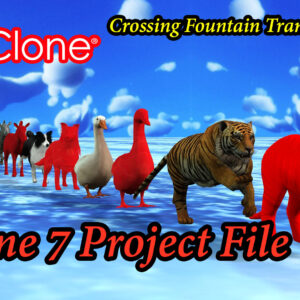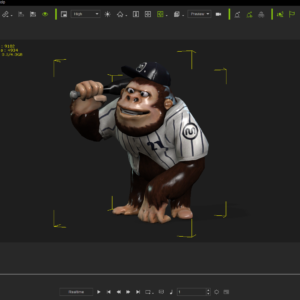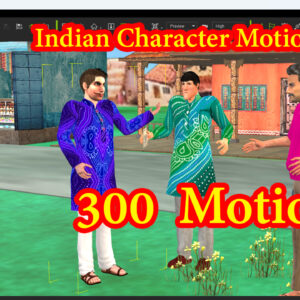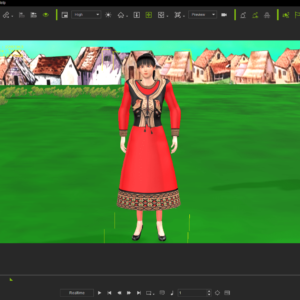Description
Funny Toon Character 1 For iclone 8
1. Concept and Design
Character Development:
Personality: Define your character’s personality. Are they goofy, grumpy, mischievous, or a mix? This will guide their design and expressions.
Exaggeration: Cartoon characters are often exaggerated. Think big heads, small bodies, long limbs, or unusual features.
Reference: Collect images of existing cartoon characters for inspiration, but avoid direct copying.
Software Choice:
Blender: A powerful and free open-source 3D software with a steep learning curve but immense flexibility. Excellent for complex characters and animations.
Maya: Industry-standard software used in professional studios. More expensive and complex than Blender.
Cinema 4D: A user-friendly option with a strong focus on character animation and visual effects.
Sculptris: A simpler sculpting tool that’s great for beginners to learn basic 3D modeling.
2. 3D Modeling
Basic Shapes: Start with simple shapes (cubes, spheres, cylinders) to form the character’s basic structure.
Sculpting: Use sculpting tools (like those in Blender or Sculptris) to refine the shapes, add details, and create unique features.
Topology: Ensure clean topology (how the mesh is connected) for smooth deformations and animations.
Rigging: Create a skeleton (rig) that controls the character’s movements. This involves creating bones and connecting them to the character’s mesh.
3. Texturing and Materials
Textures: Create or find textures for the character’s skin, clothes, hair, and any other materials.
Materials: Assign materials to different parts of the character, defining their color, shininess, and other properties.
4. Animation
Keyframing: Use keyframing to animate the character’s movements, expressions, and poses.
Lip-syncing: (Optional) If your character speaks, create lip-sync animations to match the audio.
Timing and Spacing: Carefully adjust the timing and spacing of the animations to create a believable and comedic effect.
5. Rendering
Lighting: Set up lighting to enhance the character’s appearance and create the desired mood.
Rendering: Render the final animation or still images. Experiment with different render settings to achieve the desired look.
Tips for Joke Cartoon Characters
Exaggerated Features: Emphasize features that contribute to the character’s humor (big nose, goofy teeth, etc.).
Silly Physics: Don’t be afraid to break the rules of physics for comedic effect (characters bouncing high, limbs stretching unrealistically).
Over-the-Top Expressions: Create exaggerated facial expressions to convey emotions clearly and humorously.
Simple Shapes: Keep the overall design relatively simple to avoid cluttering the visual impact.
Resources
Online Tutorials: YouTube is a fantastic resource for Blender, Maya, and other 3D software tutorials.
Character Design Books: Explore books on character design for inspiration and techniques.
Online Communities: Join online forums and communities to connect with other 3D artists and get feedback.
Important Note: Creating 3D models and animations takes time and practice. Don’t get discouraged if you don’t see results immediately. Start with simple projects and gradually increase the complexity as you learn. Have fun and experiment!






Reviews
There are no reviews yet.